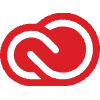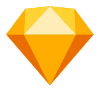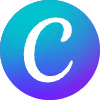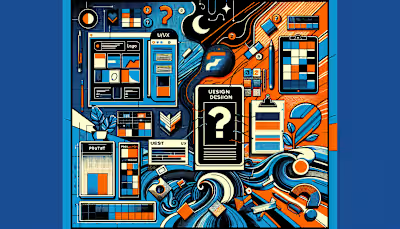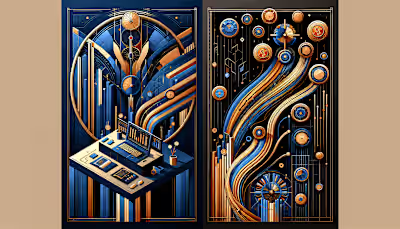Graphic Designer Platforms: Where the Top Talent Hides

Graphic Designer Platforms: Where the Top Talent Hides
Why Graphic Designer Platforms Are Vital
The Best Platforms for Graphic Design Talent
1. Contra
2. Upwork
3. Fiverr
4. Dribbble
5. Behance
Tips to Choose the Right Platform
Ways to Examine Designer Portfolios
Steps for a Productive Collaboration
Frequently Asked Questions about Graphic Designer Platforms
Which platform is best for graphic designers?
Where are 5 places that graphic designers are most needed?
What is the best platform for graphic design earning?
Key Takeaways
Graphic Designer Platforms: Where the Top Talent Hides
There’s this moment I keep coming back to—when a client reaches out and says, “We’ve worked with three designers already, and nothing feels right.” Nine times out of ten, it’s not about skills. It’s about where they’re looking.
As a freelance designer, I’ve seen the difference a good platform makes—not just for clients, but for us creatives too. There’s something about working through a space that actually understands design, rather than treating it like a gig economy commodity.
I’ve been on both sides of the screen: pitching myself and scanning through creative briefs. And honestly? The platform you choose shapes how that interaction goes. Some are like well-lit studios; others feel like dimly lit basements with no context.
Why Graphic Designer Platforms Are Vital
Graphic designer platforms act as curated spaces that reduce the noise. They help organize talent in a way that makes it easier to spot who actually aligns with a brand’s needs.
With the rise of digital-first everything—apps, websites, packaging, social—demand for strong design has only gone up. It’s no longer just about making something look nice; it’s about whether it works.
Platforms built for designers help match clients with professionals who understand branding systems, accessibility, motion, or UX—not just someone who can make a logo in Photoshop.
Instead of scrolling endlessly or relying on referrals that go nowhere, these platforms offer a direct path to specialists with real-world experience.
“Designers don’t hide—they just work in better-lit rooms.” 💡
Some platforms also allow clients to see how designers think, not just what they make. That’s key when working on anything beyond surface-level visuals.
In a market where everyone wants a brand that stands out, the place where you find your designer matters just as much as the designer themselves.
The Best Platforms for Graphic Design Talent
As of April 11, 2025, the landscape for finding graphic designers is spread across a mix of freelance marketplaces, visual communities, and creative ecosystems. Each platform differs in how it handles compensation, visibility, and collaboration. Some prioritize speed. Others focus on depth of work or long-term client relationships.
1. Contra
Contra is a commission-free platform built for independent professionals. Designers keep 100% of what they earn, which removes the typical fee deductions found on other platforms. The ecosystem supports collaborative project workflows, including built-in contracts, timelines, and feedback threads.
The platform also leans heavily into community. Designers often share work-in-progress, offer each other critiques, and connect across niches like branding, motion graphics, or UX/UI. This social layer makes it easier to understand how a designer thinks—not just what they make.
“If you’ve ever had to explain to a platform why you should keep your own earnings, you’ll understand why commission-free matters.” 😅
Contra allows direct messaging, client-designer agreements, and portfolio showcasing—all in one place, without requiring third-party tools or external invoicing.
2. Upwork
Upwork has one of the largest pools of freelance talent, covering everything from logo design to mobile UI kits. It supports hourly or fixed-price projects and uses an escrow system for payments. Clients can vet candidates based on job success scores, verified credentials, and work history.
There’s less creative community than on design-centric platforms, but the reach is wide. Designers who specialize in tools like Figma or Adobe Illustrator often list their certifications and niche skillsets directly in their profiles.
Upwork charges freelancers a tiered service fee based on lifetime billings with each client, starting at 20% and decreasing over time.
3. Fiverr
Fiverr structures its marketplace around pre-packaged services called “gigs.” Designers list offerings like “Minimalist Logo in 48 Hours” or “Instagram Templates Pack,” each with set delivery times and pricing tiers.
It’s known for fast turnarounds, lower-cost entry points, and limited client customization unless custom orders are used. The platform works well for small-scale, repeatable design needs like social media graphics, thumbnails, or print collateral.
Fiverr applies a 20% commission on all orders, regardless of the project size or client relationship.
4. Dribbble
Dribbble started as a community for designers to share visual snippets (“shots”) of their work. It now includes a job board and freelance project listings for roles like brand designer, illustrator, and motion artist.
Clients can search using filters like skillset, availability, and location. The platform highlights visual style, making it easier to browse portfolios quickly. However, it emphasizes aesthetics over case studies, so strategic thinking or UX process might not be immediately visible.
Direct hiring is available through Pro accounts, and many designers use Dribbble as a discovery tool alongside other platforms.
5. Behance
Behance is integrated with Adobe Creative Cloud and serves as a portfolio hub for creative professionals. Designers upload full case studies, animations, and prototypes directly from Adobe apps like XD, Illustrator, or After Effects.
Clients can browse by creative field, tools used, or project type. Some designers also participate in Adobe-sponsored challenges, which can reveal how they approach open briefs and creative constraints.
Behance doesn’t offer built-in hiring tools by default, but Adobe Talent (a premium service) allows companies to post jobs and contact designers directly within the platform.
Tips to Choose the Right Platform
Budget varies widely across graphic design platforms. Contra operates commission-free, meaning designers keep their full earnings and clients pay only what’s agreed upon. Platforms like Fiverr offer low-cost options with pre-set package pricing, while others like Upwork apply tiered service fees that can affect the total project cost. High-end platforms such as Toptal involve premium pricing due to curated talent and vetting processes.
Project complexity also plays a role. For simple deliverables like social media graphics or quick logo edits, marketplaces with gig-style listings may suffice. More complex work—such as app interfaces, brand systems, or packaging design—often requires platforms that support deeper collaboration, access to full portfolios, and multi-phase project structures.
Timelines are built differently depending on the platform model. Gig-based sites often promise delivery within 48–72 hours, but this speed may come at the cost of customization. Commission-free platforms that offer built-in milestone tracking make it easier to break projects into phases, which helps manage longer timelines or iterative feedback.
Community matters more than it seems. Platforms with active design communities—like Behance, Dribbble, or Contra—allow clients to observe how designers think, not just what they produce. These networks often include critiques, design challenges, and real-time feedback loops, which reveal more than static portfolios.
“Finding talent is easy. Finding talent that talks to other talent? That’s where the good stuff lives.” 🎯
Direct communication channels reduce delays and misinterpretation. Some platforms require all messages to go through official dashboards, while others allow real-time messaging or even video calls. This affects how quickly questions get answered and how clearly expectations are set.
Platform policies also impact collaboration. Some platforms restrict off-platform communication, introduce transaction fees, or hold payments in escrow until delivery is approved. Commission-free platforms tend to offer more transparent agreements and fewer third-party restrictions, which can simplify both budgeting and workflow.
Ways to Examine Designer Portfolios
Graphic designer portfolios are not standardized. Some are galleries of polished visuals, others are deep dives into multi-phase projects. The format depends on how the designer prefers to communicate their process.
Style is the first filter most clients use. A portfolio filled with pastel palettes, serif typography, and hand-drawn illustrations won’t translate well for a fintech brand prioritizing grayscale, bold sans-serifs, and minimalism. Visual consistency across projects helps identify whether a designer has a signature voice or adapts to brand needs.
Experience level can show up in subtle ways. Junior designers may show class projects or speculative work. Mid-level portfolios often include freelance or agency pieces, with some constraints explained. Senior designers usually feature complete brand systems or interface projects with complex stakeholder feedback loops. Time in the industry is less important than how they explain their role in a project.
Some portfolios include storytelling elements—case studies, UX flows, or before-and-after comparisons. These indicate whether the designer contributed to strategy, or just executed visual tasks. Look for notes on audience goals, research, or iteration.
Color consistency is one of the easiest things to scan. If a designer uses colors that clash or shift drastically within a single brand, it may suggest a lack of system thinking. Conversely, designers who work with strict brand guidelines often showcase palette control and accessibility compliance 🧠.
User experience samples are critical for digital projects. These can include wireframes, prototypes, or annotated screens. Designers who include user journey maps or explain interactions often work in product or UX/UI roles. Those focused on static work—packaging, editorial, signage—may skip this entirely.
Brand alignment means the designer understands tone, audience, and industry. A good signal is when the designer doesn’t just show visuals but explains what the brand was trying to communicate and how the design supported that.
“If a portfolio looks good but you can’t tell who it was for, it’s probably not doing its job.”
Some designers link to live sites, apps, or social feeds where their work is active. This helps confirm whether the portfolio reflects real outcomes or mockups. Others showcase printed materials or campaign photos for environmental or packaging work.
Consistency, clarity, and context carry more weight than quantity. A portfolio with three detailed case studies can say more than one with 30 disconnected images.
Steps for a Productive Collaboration
Productive collaborations between clients and graphic designers begin with clearly defined goals. These include the purpose of the project, the intended audience, and the expected deliverables. Goals written in plain language, like “create a new visual identity for our product launch in June” or “redesign our onboarding flow to reduce bounce rate,” help reduce ambiguity.
After goals are set, the next step is to break the work into milestones. For example, a logo project might include three phases: concept exploration, refinement, and final delivery. Each milestone includes a specific task, timeline, and review point. This structure creates checkpoints for feedback and avoids last-minute surprises.
Milestones also help avoid scope creep. If a new request comes in—like adding social media templates to a brand kit—it can be discussed as a separate phase or fee. Outlining this early keeps communication clear and expectations aligned.
Open feedback loops are part of day-to-day project health. This involves setting a preferred method (comments on files, async check-ins, or weekly video calls) and establishing when feedback is expected. A designer who receives unclear feedback like “make it pop” without context is less likely to deliver what the client imagines.
“If feedback sounds like a vibe, not a direction, expect design revisions that feel like a guessing game.” 🎯
Using platforms that support built-in messaging, file sharing, and real-time updates—like Contra—helps reduce reliance on scattered tools. Designers and clients can keep everything in one place, from drafts to feedback notes.
Commission-free platforms also simplify financial transparency. On Contra, the total rate agreed upon is the amount the designer receives—there are no service fees deducted mid-project. This removes confusion about what portion of the payment goes to the platform, and what goes to the freelancer.
When payments are tied to milestones, it also helps both parties track work completed versus work remaining. This setup is useful for projects that stretch over weeks or involve multiple team members reviewing the work.
In longer collaborations, clients often return to the same designer. Having a shared project history and clear process in place speeds up future work. When the collaboration process is organized and documented, switching gears later becomes easier.
Frequently Asked Questions about Graphic Designer Platforms
Which platform is best for graphic designers?
The best platform depends on the type of work a designer prefers and the kind of clients they want to attract. For those focused on keeping full control of their earnings and building long-term client relationships, Contra offers commission-free contracts, built-in project tools, and direct messaging. Designers who prioritize exposure to a large client base and are comfortable with a competitive bidding environment tend to use Upwork, which supports a broad range of project types and pricing models.
“Choosing a platform is less about what’s ‘best’ and more about what fits the way you work.”
Fiverr works well for designers offering repeatable service packages with fast delivery. Dribbble is strong for showcasing visual style and attracting clients who value aesthetics. Behance favors designers who want to share full case studies and integrate their work with Adobe Creative Cloud. Each platform serves different needs based on visibility, communication style, and pricing structure.
Where are 5 places that graphic designers are most needed?
SaaS and Tech Startups – For UI/UX, branding, and product design.
E-commerce and Retail – For packaging, email campaigns, and digital ads.
Healthcare and Wellness – For infographics, patient-facing tools, and brand identity.
Education and eLearning – For explainer visuals, course interfaces, and print collateral.
Entertainment and Media – For social content, thumbnails, and streaming platform graphics.
These sectors regularly hire designers for both full campaigns and ongoing support work. Demand is consistent due to product updates, seasonal content, and evolving brand needs.
What is the best platform for graphic design earning?
Platforms that do not take a percentage of the freelancer’s earnings typically allow for higher overall income. Contra is structured to be commission-free, meaning if a designer agrees to $1,000 for a project, they receive the full amount. On platforms like Upwork or Fiverr, a portion of the payment is taken as a service fee, which can reduce total earnings by 5–20% depending on the platform and billing history.
“Same project. Same hours. Less platform fees = more take-home pay. Simple math.” 💸
Earning potential also depends on the type of projects available and the client expectations. On Contra, project scopes tend to be tailored, often leading to deeper collaborations and repeat work. Gig-based platforms may offer faster payouts but lower average ticket sizes. Freelancers working on longer-term projects with milestone-based payments tend to earn more steadily over time, especially when fees are not deducted from each transaction.
Key Takeaways
Platform selection affects how designers are discovered, how work is managed, and how payments are handled. Each platform structures communication, contracts, and collaboration differently, which shapes how the project unfolds.
Portfolios are not just visual galleries—they reflect how a designer thinks, solves problems, and aligns with brand goals. Reviewing case studies, checking consistency, and asking for context reveals more than polished visuals alone.
Designer-client relationships function best when project scopes are clear, feedback is structured, and communication is ongoing. Platforms that support direct messaging, flexible milestones, and transparent payments reduce friction across collaboration.
Commission-free platforms like Contra remove percentage-based deductions, allowing both sides to align on value without adjusting for hidden fees. This makes project budgeting more predictable and payouts straightforward.
Different platforms serve different use cases. Some are built around fast delivery, others around curated talent or design-focused communities. The fit depends on project type, timeline, and how much creative input is expected.
“A good project isn’t just about who you hire—it’s where the work lives while it’s being done.” 🧩
Designers working in environments that support creative feedback, fair compensation, and accessible tools tend to produce more thoughtful, adaptable work. Platforms that reflect those values often become long-term workspaces—not just one-off hiring spots.
Like this project
Posted Apr 12, 2025
Graphic Designer Platforms: Where the Top Talent Hides. Discover the best sites to find skilled designers for branding, UX, and creative projects.

